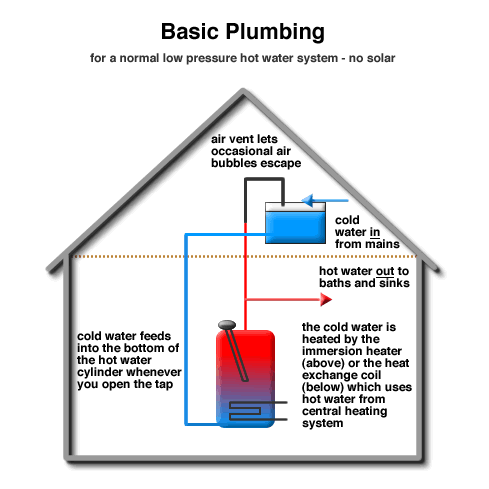I recall having read comments about "accelerator pipes" helping. Basically, surrounding the top fitted element in a pipe that fits nearly to the bottom of the tank. I think the idea is that it brings cold water up from the bottom of the tank, creating a thermosyphon similar to the Willis system mentioned earlier. Assuming a suitable piece of pipe could be found, it might be worth trying - it doesn't involve any external plumbing changes.
Does anyone have any experience doing this ?
My thoughts are along the lines of ...
If you are bringing cold water up from the bottom of the tank, it's going to mean that the warm water coming out the top of the pipe isn't as hot as it can be where the water stratifies as it probably is now. Therefore, by the time the top of the cylinder is hot enough for the stat to turn off, more of the cylinder is hot.
Ie, in simplistic terms, say the water came out the top of the pipe 20˚ hotter than it went in at the bottom, and the bottom of the tank was at 10˚. Initially, the top of the tank would only reach 30˚, and would remain like this until the warmer water has reached the bottom of the tank. So instead of having a tank where the bottom is still 10˚ but the top may be 40 to 50˚, you've a tank full of water at 30˚. By this time, the water will be coming out the top at 40˚, and you won't turn off a stat set at (say) 60˚ until the bottom of the tank reaches 40˚. I suspect that with a good thermosyphon, 20˚ is optimistic - if there were only 10˚ difference, then you'd need the whole of the tank to reach 50˚ before you triggered a stat set at 60˚.
With a bare element, while it will create water movement, it'll draw in water from around the same height as the bit of element that's heating it. So while the stat is getting close to switching off, the top of the element is actually heating already hot water at the top of the tank, rather than cooler water that's been drawn up the pipe from the bottom of the tank.
Sit's back and waits for the corrections



